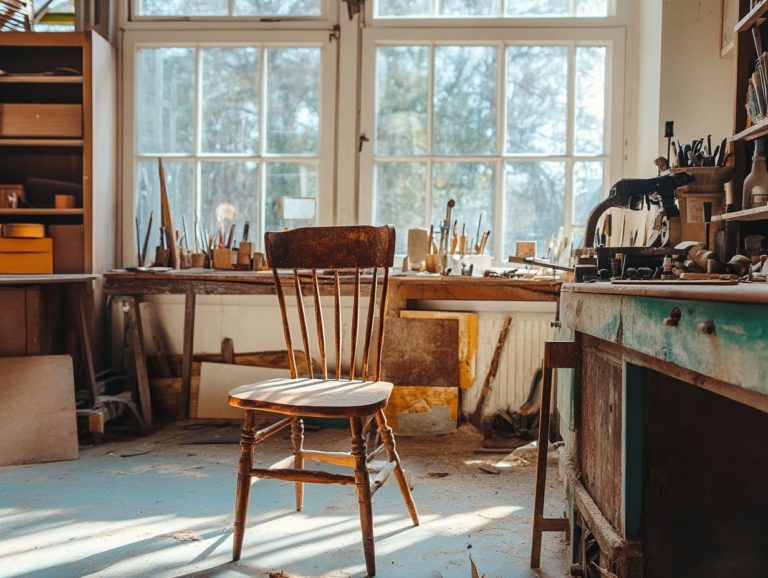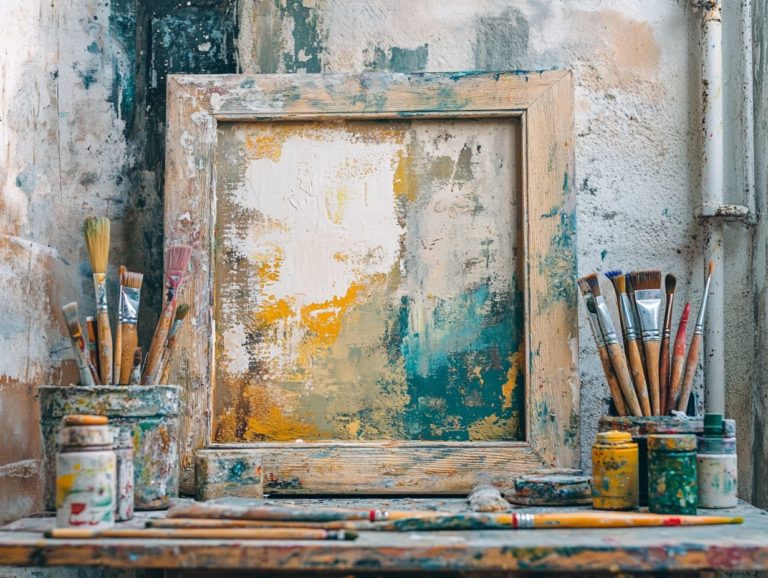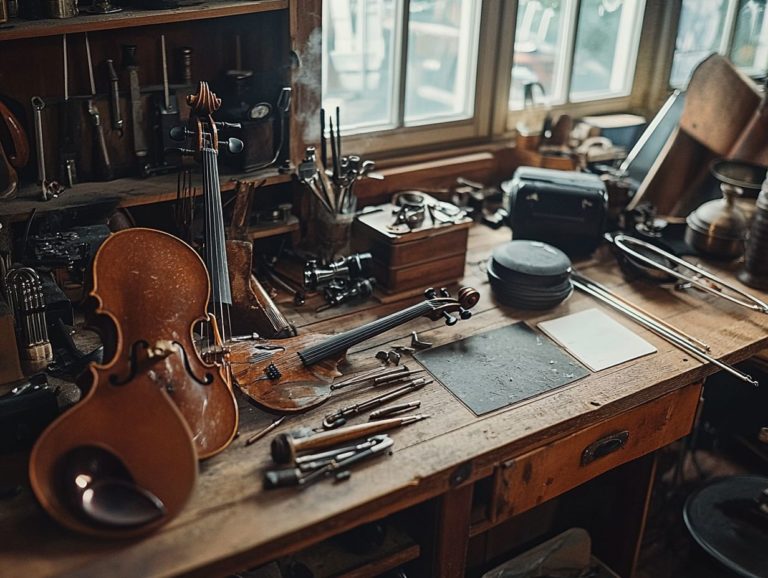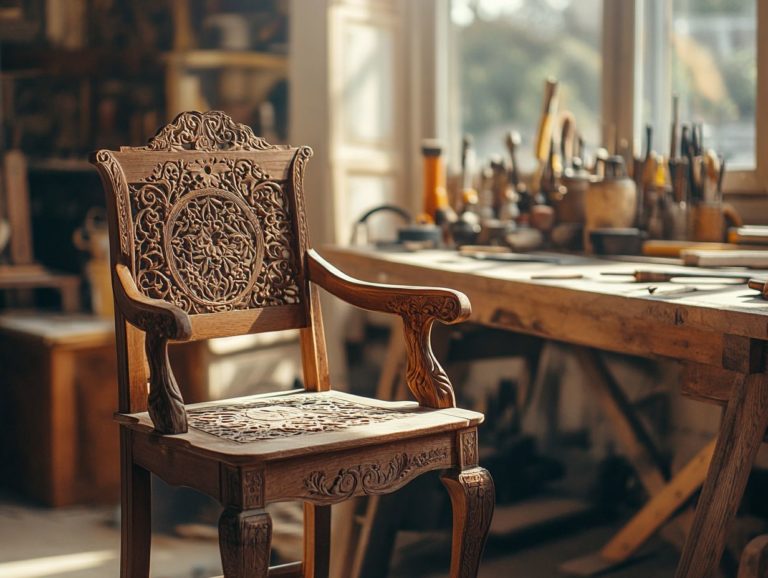The Do’s and Don’ts of DIY Restoration
Starting a DIY restoration project is an exhilarating journey, full of cost savings and personal achievement, especially in home renovation.
However, navigating home improvement presents its own challenges. From potential pitfalls to essential tools and crucial safety precautions, understanding the do’s and don ts is vital for success.
This guide is designed to help you through each phase of the DIY restoration process, empowering you to know when to tackle projects on your own and when to call in the experts.
Immerse yourself and unlock the secrets to bringing your restoration visions to life!
Contents
- Key Takeaways:
- Benefits of DIY Restoration
- Common DIY Restoration Mistakes
- Essential Tools for DIY Restoration
- Safety Precautions for DIY Restoration
- When to Call a Professional
- Frequently Asked Questions
- What are the do’s and don’ts of DIY restoration?
- Why is having a plan important in DIY restoration?
- Should I wear safety equipment while doing DIY restoration?
- Is it necessary to call a professional for DIY restoration?
- What kind of research should I do before starting a DIY restoration project?
- What are some common mistakes to avoid in DIY restoration?
Key Takeaways:

- Save money and feel accomplished by tackling DIY restoration projects yourself.
- Learn from others’ mistakes and avoid common pitfalls.
- Have the right tools on hand and know when to call a professional, especially for plumbing or electrical work.
Benefits of DIY Restoration
Starting DIY restoration brings many benefits, from substantial cost savings to a rewarding sense of personal achievement. It opens up a world of exciting home renovation projects that enhance the quality of your living space.
When you take on these tasks yourself, you can choose quality tools and materials that fit your budget. Plus, you’ll acquire new skills along the way, improving both your home and your capabilities.
Cost Savings and Personal Satisfaction
One key benefit of DIY restoration is the significant cost savings you can achieve. With a well-planned budget and affordable materials, you can transform your space without overspending.
By opting out of professional services, you not only reduce expenses but also gain the unique satisfaction that comes from completing projects independently. However, understanding the importance of research in DIY restoration is crucial. This approach allows you to take charge of your home improvement journey, fostering a fulfilling sense of accomplishment.
Investing in quality tools can elevate the results of your DIY projects. It’s crucial to set realistic expectations regarding the time and skills involved, ensuring your projects remain enjoyable rather than overwhelming. Additionally, being aware of the top 5 DIY restoration mistakes to avoid can help make the journey of creating and enhancing your living space both fulfilling and financially savvy.
Common DIY Restoration Mistakes
When you embark on DIY restoration projects, it’s essential to recognize the common missteps that can impede your progress and jeopardize safety and quality.
Proper preparation and adherence to building codes rules that ensure safety in construction are not just suggestions; they are essential for your success.
Identifying and Avoiding Mistakes

Identifying and avoiding common mistakes in your DIY restoration projects can significantly enhance both the outcome and your satisfaction with the work completed.
Many individuals often overlook critical aspects, such as taking improper measurements or neglecting thorough planning, leading to frustrating setbacks. For example, miscalculating dimensions might result in purchasing materials that are either insufficient or excessive.
To mitigate these issues, it s crucial to craft a detailed project plan and double-check all measurements beforehand. Maintaining safety precautions, including wearing protective gear and securing your workspace, is vital for a smooth restoration process.
Setting realistic expectations regarding the timeline and complexity of tasks allows you to make necessary evaluations and adjustments as the project progresses, ultimately leading to a more rewarding and enjoyable experience.
Essential Tools for DIY Restoration
Having the right essential tools is crucial for any DIY restoration project. Quality tools not only make the process smoother, but they also ensure you complete tasks with precision and safety.
Whether you re tackling electrical work or restoring flooring, the right equipment is tailored to meet the specific demands of each project type.
Must-Have Tools for Different Projects
For your DIY restoration projects, certain must-have tools become essential. These range from basic hand tools to specialized equipment designed for specific tasks like plumbing or electrical work.
Having the right tools streamlines your process and ensures following building rules. This helps you avoid costly mistakes. For example, a reliable level is essential for laying tiles or cabinets, making sure everything is perfectly aligned. A stud finder is invaluable when you’re safely mounting shelves or artwork.
Prepare properly with these tools to create a smoother workflow. This allows you to tackle each phase of your projects with confidence. Act now to ensure your safety by wearing gloves and goggles every time you use power tools, as they are crucial for protecting your well-being throughout the restoration process. For those looking to enhance their skills, check out transforming vintage finds: DIY restoration tips.
Safety Precautions for DIY Restoration
Safety precautions are essential in any DIY restoration project. Maintain proper awareness and use the right safety gear to prevent accidents and create a secure working environment.
Adhere to necessary safety guidelines and stay mindful of potential dangers to protect yourself and ensure a successful project.
Protective Gear and Hazard Awareness
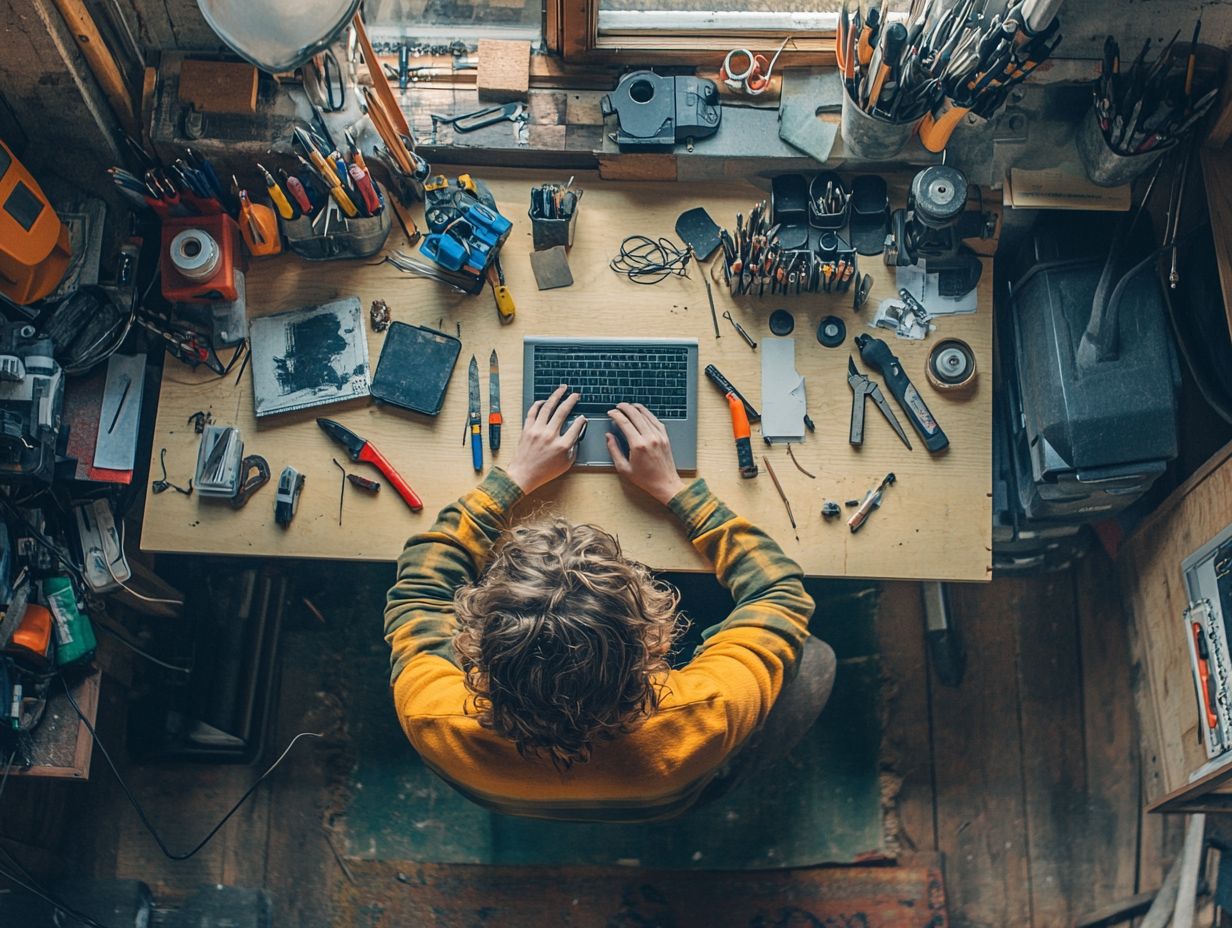
Using protective gear and being aware of dangers are vital components of safety in your DIY restoration projects. This allows you to work with both confidence and security.
To navigate potential risks effectively, identify the specific protective gear suited for your tasks. For example, eye protection is crucial when you re handling power tools or any hazardous materials. Gloves also serve as a reliable barrier against chemical exposure and sharp objects.
Don t overlook common hazards like slips, trips, and falls. These can easily arise amidst the excitement of your creative endeavors and lead to serious injuries. Sticking to established safety guidelines enhances your personal safety and boosts productivity.
It s smart to consider insurance coverage for accidents that might happen during your DIY efforts. This offers you peace of mind as you take on ambitious projects.
When to Call a Professional
Recognizing the right moment to enlist a professional during your DIY restoration project is essential. When you notice signs that suggest the task may surpass your skills or resources, seeking expert assistance can be a game changer.
Professional knowledge saves you valuable time and guarantees compliance with building codes and safety standards. This ensures your project stays on track and up to par.
Signs that a Project is Beyond DIY
Certain signs may suggest that your DIY restoration project is reaching its limits. If you start facing extensive structural changes, electrical issues, or plumbing repairs, it s wise to bring in professionals. This ensures safety and compliance with building codes.
If the workload becomes overwhelming or unexpected complications arise, these should serve as red flags. For example, stumbling upon outdated wiring or discovering mold during your renovation should prompt you to seek expert assistance.
Inspections are vital for uncovering hidden issues. Using high-quality materials guarantees durability and adherence to industry standards.
Without proper oversight and the right resources, you risk compromising the integrity of the entire project. This jeopardizes not just your financial investment but also the safety of everyone involved.
Frequently Asked Questions
What are the do’s and don’ts of DIY restoration?

The do’s and don’ts of DIY restoration include having a plan, using proper safety equipment, and knowing when to call a professional. Researching and gathering materials is just as crucial before starting the project.
Ready to start your DIY adventure? Explore more resources to enhance your skills today!
Why is having a plan important in DIY restoration?
A solid plan ensures your restoration project runs smoothly. It helps you avoid costly mistakes and saves you time and resources.
Should I wear safety equipment while doing DIY restoration?
Absolutely! Wearing gloves, goggles, and a mask protects you from sharp objects, chemicals, and dust. Always prioritize your safety!
Is it necessary to call a professional for DIY restoration?
DIY restoration can be fun and rewarding. But if a job feels too big or complex, don t hesitate to call a pro for help!
What kind of research should I do before starting a DIY restoration project?
Research the right methods and supplies you ll need for your project. Look for safety precautions and gather inspiration from others who have tackled similar jobs.
What are some common mistakes to avoid in DIY restoration?
Common mistakes include skipping the prep work, using the wrong materials, and rushing the job. Follow safety guidelines, use quality tools, and take your time for the best results. Set realistic expectations to keep your project on track!

